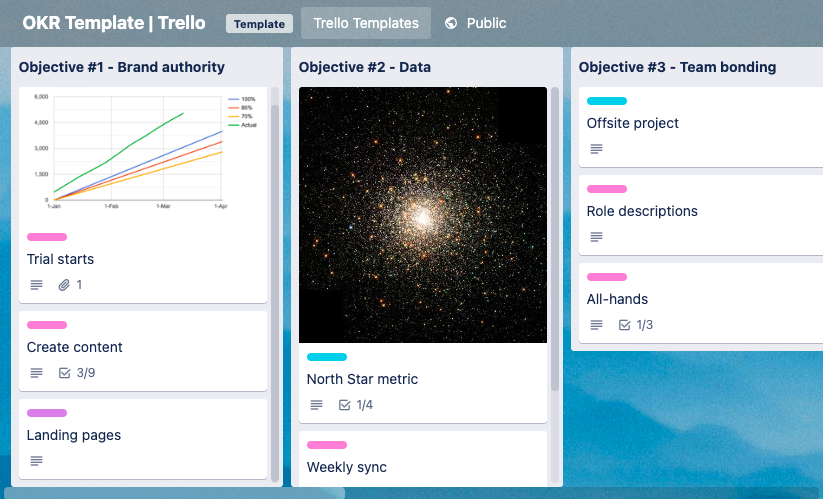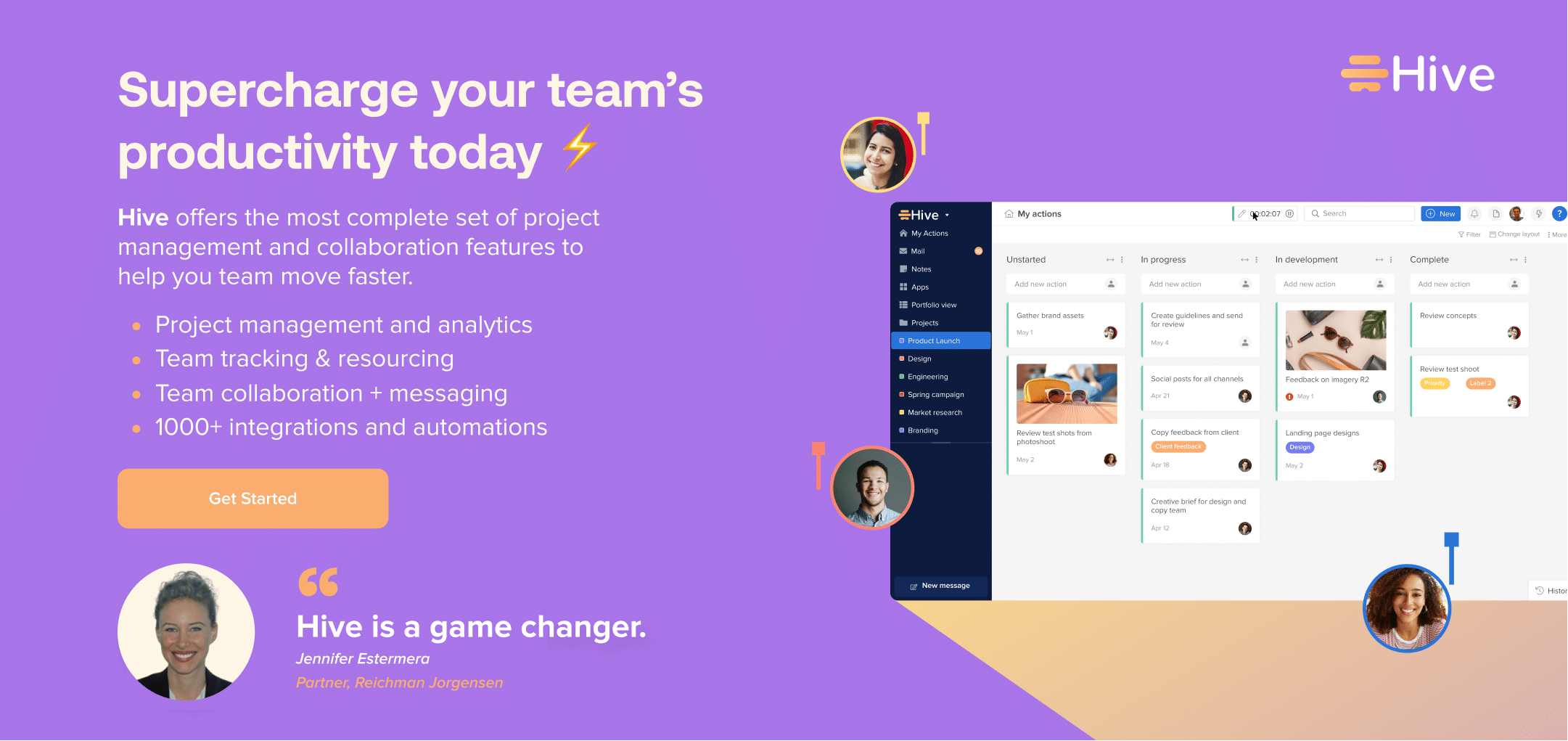
8 OKR Software Tools For Tracking Your Team’s Progress In 2023
As our workplaces continue to evolve, so do our tools to get things done. Many businesses have migrated away from pen-and-paper to-do lists, instead moving on to more robust project management platforms. Luckily, the digital space is ripe with tracking programs that your business can use to keep projects moving forward and everyone on track.
These software tools are more than just simple programs that track the linear progress of a project from point A to B. Instead, they are complex and robust programs that incorporate project management metrics and can be tailored to your business goals and strategy.
In project management, the system of Objectives and Key Results (OKR) has become a popular way to track a team’s progress. The use of digitally tracking OKRs has opened up a world of possibilities as software companies have created intuitive programs that can be used to measure and monitor your team’s performance by setting objectives with associated key results.
There are several great OKR software tools on the market in 2023. Here we will focus on some of the best, discuss their key features, and determine which OKR software platforms are worth your investment.
What are OKRs and how do they work together?
If you have been following basic project management tactics for your business, the term “Objectives and Key Results” should have popped up along the way. However, if this term is still unfamiliar, I’ll summarize it in simple terms. The term OKR refers to a goal-setting framework that defines and tracks progress toward specific, measurable, and time-bound objectives.
OKRs consist of two parts combined: Objectives & Key Results.
Objectives: These are high-level, qualitative targets an organization aims to achieve. Objectives are typically ambitious and inspiring and help align team efforts that strive toward a common goal. Objectives need to be defined, communicated and reviewed regularly. These objectives are meant to challenge teams and take on ambitious goals. Examples of objectives for your business can include “improve employee engagement or “improve customer satisfaction”.
Key Results: These are quantifiable metrics that measure the progress toward the objectives. Key Results are more aggressive but realistic. They are used to help track the success of the objectives and are part of the equation used to ensure that they are attainable and measurable. Examples of key results for your business can include “Increase participation in company events by 30% by the end of Q2” or “improve customer satisfaction scores by 5%”.
Notice how both objectives and key results work together? For example, you can’t just expect your business to succeed in the objective of “improving employee engagement” without the key results stepping in to move it along to hit certain goals or benchmarks.
ORKs work together like a boat works with a rudder. A boat without a rudder can move – it just might not go in the direction you want. Combine the boat and the rudder, like you combine both objectives and key results, and you can get your project moving in the right direction in no time!
What does your business need in its OKR software?
With OKRs, your business may determine:
“We will achieve X objective, as measured by the following Y key results.”
But, before you can achieve and measure, you need to understand your X and Y clearly.
When you search for your OKR software, what is your business end game or requirements? Do you need this tracking software for individual goal setting or team collaboration? Do you want your tracking platform to have AI capabilities and be suitable for a small team, or do you need enterprise capabilities to scale as your organization grows?
Knowing exactly what your business needs and how you want to track it helps you hone in on what goal-setting platform you need for your short and long-term objectives and results.
To get your OKR software search started, here are a few of our favorite OKR tools for 2023:
1. Hive

Hive is a project management platform that allows individual users and businesses to manage projects, track tasks, set goals and monitor progress. To support your OKR-setting needs, Hive has a powerful Goals application that lets users create and track customizable goals and objectives.
Once you create a goal, Hive lets you share it with other users, assign the goal to relevant teammates, track activity and give yourself a deadline. Hive’s Goals dashboard is much more than a list of endpoints — it’s your North Star.
Key features include:
- Creating goals with other team members in real-time
- Sharing of the team’s objectives within a dynamic dashboard
- Accurate tracking with automated notifications and AI assistance
- Project-based goals that populate statuses based on task completion and overdue items
2. Weekdone

Weekdone is an OKR software tool designed to help large enterprises measure, track and improve their organizational performance. While it does offer long-term goal setting, this platform focuses mainly on, you guessed it, projects worked on and completed during a week. From weekly updates to quarterly meetings, Weekdone’s OKR framework offers an all-in-one solution for businesses that want to increase their team’s productivity and cross-department communications.
Key features include:
- Team objectives and key results for each department
- Automated reminders for goals
- Interactive real-time dashboards
- Quarterly OKRs mixed with weekly planning and success metrics
3. Coda

Coda is another great option for setting organization-wide OKRs that focus on employee engagement. From creating progress visualizations for stakeholders to connecting OKR tables and analysis to other documents, Coda is the perfect platform for businesses looking to simplify their OKR framework. Coda’s team-building abilities also make it easy to get your whole organization on track, and its interconnected platform ensures that projects are tracked, measured and
Key features include:
- Prebuilt templates take the guesswork out of your campaigns
- Seamless integration with Slack, Zoom, and other applications
- Useful activity feeds drive and facilitates discussion amongst team members
- Offers “one source of truth” for users
4. Lattice

Lattice is an OKR software designed to help small and medium-sized business track objectives, manage collaboration and share progress. This platform provides a place to track tasks and objectives and allows employees to communicate, engage and grow within their roles freely.
Key features include:
- Integrated goal tracking with performance reviews
- 360-degree feedback
- Real-time messaging and collaboration
- Customizable security settings
5. Trello

Trello is a project management software known for its Kanban boards, which makes an effective way to track OKRs. You can also use lists and card views to see your projects and tasks. Navigate to Trello’s template library and you’ll find pre-made boards with OKR planning.
In the first column, you’ll see “Objective” (category) and in each card, within the column, you’ll find a “Key Result” (goal/target). With Trello’s OKR template, your team can easily update their progress periodically. Trello is an intuitive tool, its no-code automation features help you optimize the time spent on repetitive tasks.
Additionally, Trello allows you to invite new members to collaborate in your workspace, track tasks, and use color-coded labels for organization. And it integrates with many popular apps like Slack, Google Drive, and Microsoft Teams, so there’s no need to stop using software you already love. Trello has a free version, and its paid plans start at $5 per user/month.
Key features include:
- See your work from multiple angles: Kanban board, timeline, table, calendar, and more
- Automate repetitive tasks and enhance workflow
- Integrate with over a hundred of your favorite tools
- Dozens of premade templates
- Pre-built Trello playbooks designed for all teams
6. Profit.co

Profit OKR is a project management software that helps companies prioritize goals, save time, engage teams and execute strategies with limited resources. Profit OKR dashboard makes it easier to visually track progress and issues, helping managers to adjust tactics and fix project misalignments. You can filter and export files from the dashboard and easily measure performance by department. Profit is free for up to five users. Its paid plan starts at $9/monthly per user.
Key features include:
- Real-time heatmaps allow managers to identify potential problems easily and push for progress.
- Link your tasks with Key Results with expert-step guidance, and facilitate the progress of Key Results with the assigned tasks.
- Employees can tag colleagues with @mentions which encourages more collaboration, and also they can share their learning with #tags.
- Available for iOs, Windows and Android.
7. ClickUp

ClickUp offers a library of customizable templates, including Company OKRs and Goals. Its flexible framework lets you craft your company’s goals while setting up the important metrics for each team. The template includes filters such as status, custom fields, tags, apps, and view types.
One of the advantages of automated systems on ClickUp is the possibility of working with external apps by integrating them into your workflow. For example, you can automate ClickUp tasks with Google Sheets, Dropbox, Calendly, GitHub, Slack, and Airtable integrations. ClickUp has a free plan, and its paid plan starts at $5 per member/per month. To see how ClickUp stacks up against other tools on the market, check out our complete guide to Click Up alternatives.
Key features include:
- Automation: allowing users to reduce manual efforts in specific tasks while freeing up teams to focus on other priority goals.
- 50+ pre-built automation to help with workflow automation and processes.
- Native chat and email, dynamic recurring tasks, customizable board views, and free integrations.
8. PeopleGoal

PeopleGoal is another good choice for tracking OKRs because it provides apps specifically designed for setting and managing objectives. With its OKR app, users can set specific and measurable goals, assign them to individuals or teams, track progress, and receive timely feedback. The platform also offers custom reports and analytics that allow companies to drill deeper into their OKR data and build custom reports with charts, graphs, and interactive data sets.
Additionally, PeopleGoal provides apps for SMART goals, 360 feedback, continuous feedback, performance reviews, surveys, development plans, one-to-ones, career plans, job families, and more. PeopleGoal has a 7-day free trial and offers a simple plan at $4/user/month with a minimum charge of $199 per month (approximately 50 users).
Key features include:
- No-code configuration for HR workflows
- Apps for OKRs, SMART goals, 360 feedback, performance reviews, surveys, and more
- Custom reports and analytics
- Seamless workflows across teams.
While this list is by no means exhaustive, you can see that by evaluating different OKR software options, you’ll be able to find the best one for your organization’s needs. Whether it’s a platform that offers excellent employee communication options or one with stellar goal-tracking metrics like Hive, each tool has unique features that may make them better suited for specific tasks or businesses.
OKRs are a great way to measure progress and ensure success in 2023. By choosing and setting your team up with a new OKR software tool, you can track progress and ensure everyone is on the same page.
Are you more familiar with other tools? Let us know in the comments below!


